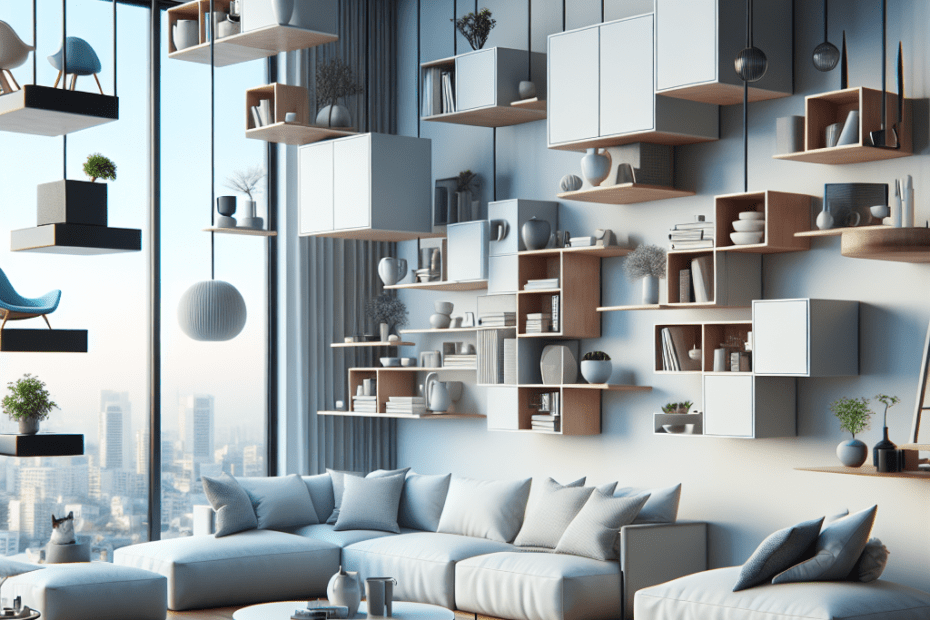Introduction
When it comes to interior design, householders and designers are constantly on the hunt for new ideas that not only make a room look good but also maximize functionality. Floating furniture is a popular trend offering many benefits. By utilizing this modern approach, designers can transform spaces into open, inviting environments. Understanding the benefits of floating furniture in room design can lead to innovative layouts and optimized living spaces.
What is Floating Furniture?
Floating furniture refers to pieces that are positioned away from walls and are often raised off the ground. This design technique can be applied to various furniture, such as sofas, shelves, or even cabinets. By creating the illusion of space, floating furniture provides a sense of flow and openness within a room. They utilize rugs or strategic placements to anchor these pieces visually, ensuring they fit seamlessly into the design.
Maximizing Space and Flow
One of the primary floating furniture benefits is space optimization. When furniture is placed against the walls, it can make a room feel crowded or boxed in. In contrast, floating pieces allow for better movement throughout the space, encouraging a natural flow. A study by the Architectural Digest suggests that floating furniture can increase perceived space by up to 20% in smaller rooms.
Enhanced Aesthetic Appeal
Floating furniture can dramatically uplift the visual appeal of any room. By breaking away from conventional layouts, designers can create dynamic environments. They can position sofas centrally or use floating cabinets to utilize vertical space efficiently. According to Houzz, rooms with floating furniture often feel more inviting and cozy, enhancing the aesthetic value significantly.
Functional Flexibility
Floating furniture offers unmatched flexibility. They can easily rearrange or replace pieces without much hassle. This adaptability allows homeowners to refresh their living spaces with minimal effort. For families with children, floating furniture can create safer environments by minimizing hard edges and providing spaces for activities.
Increased Natural Light
Another key benefit is increased access to natural light. When furniture does not block windows or light paths, rooms become brighter. More natural light contributes to better mood and health and can make spaces feel more extensive. Studies, such as one from the NCBI, have shown that increased exposure to natural light improves productivity and well-being.
Better Viewing Angles
They often aim to elevate the viewing experience in a room with media. Floating seating arrangements can position occupants optimally towards a television, screen, or focal point. This ingenuity enhances comfort and ensures that all viewers have an unobstructed view, which is particularly beneficial in family or entertainment rooms.
Encourages Communication
By rethinking furniture placement, floating designs can foster better communication among inhabitants. When arranged in a central or circular manner, seating can encourage face-to-face interactions rather than side-by-side sitting. This layout supports good conversations and ensures everyone feels part of the group.
Table: Comparing Floating vs. Wall-Aligned Furniture
| Aspect | Floating Furniture | Wall-Aligned Furniture |
|---|---|---|
| Space Utilization | Optimizes space; improves flow | Can feel boxed; limited flow |
| Aesthetic Appeal | Modern and dynamic | Traditional and static |
| Lighting | Increases natural light | May block light sources |
| Flexibility | Easy to rearrange | Fixed; less adaptable |
| Communication | Encourages interaction | May hinder interaction |
Key Takeaways
- Floating furniture enhances space utilization and flow, improving room functionality.
- It boosts aesthetic appeal, offering modern and dynamic design options.
- Allows for increased natural light, which benefits mood and enlarges the appearance of spaces.
- Provides flexibility to rearrange and adapt rooms easily.
- Promotes better communication by encouraging face-to-face seating arrangements.
FAQ Section
- What is floating furniture?
Floating furniture refers to pieces that are placed away from walls and may be raised off the ground, creating an open and airy feel in the room.
- Does floating furniture help save space?
Yes, it optimizes space and allows for better movement and flow within the room, making it feel more spacious.
- How does floating furniture improve lighting?
By not blocking windows or light paths, floating furniture increases the availability of natural light, making rooms brighter.
- Is floating furniture safe for homes with children?
Yes, floating furniture can be safer as it minimizes hard edges and provides open spaces for kids to play.
- Can floating furniture be used in small spaces?
Absolutely. It is particularly beneficial in small spaces as it creates a sense of openness and maximizes perceived space.
